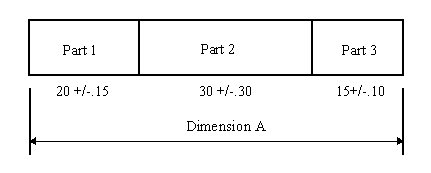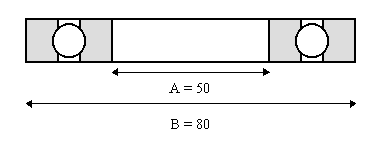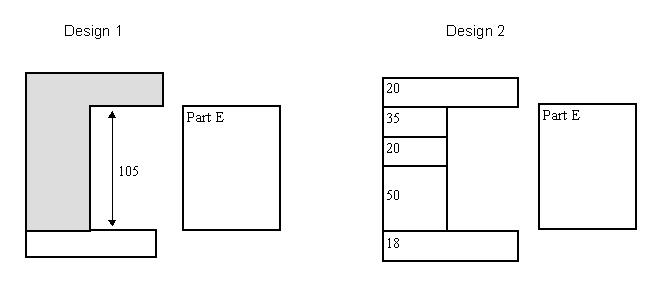
ENME 414 Computer-Aided Design, Fall
1996
Homework A
Due 9:30 am, Thursday, October 31, 1996
1. An assembly is composed of three
parts. The dimension and its associated tolerance for each of
them are given.
(1) Determine the dimension and tolerance of Dimension A using
the Max and Min Method
(2) Determine the dimension and tolerance of Dimension A using
the statistical method where (+3ó and -3ó) is assumed.
(3) Are the two solutions equal
to each other? If not, which one do you prefer? Your explanation
is required.

2. The following figure illustrates
that two tolerances are needed for the inner fitting and the outer
fitting.
(1) The inner fit should be interference fit and the outer fit
should be clearance fit. Using the tables distributed in class
to identify, at least, two tolerances for each fit. Therefore,
a total of 4 tolerances should be identified.
(2) The inner fit should be clearance fit and the outer fit should
be interference fit. Using the tables distributed in class to
identify, at least, two tolerances for each fit. Therefore, a
total of 4 tolerances should be identified.
(3) List an example for using
case (1) and list an example for using case (2). Explain the reason(s)
why there tolerances should be selected.

3. As assembly is being produced, as
shown in the figure, that is comprised of two metal plates with
a hard rubber insulation in between. The metal plates have a nominal
thickness value of 5 mm and the insulation is to be 2 mm thick.
Because of the resilience of the hard rubber material, it is understood
that the standard deviation of the process making this material
be one-half that of the process making the aluminum. If the design
requirement is 12 +/- 0.30 How to distribute the tolerances to
the three components in the design? Note that (+3ó and -3ó) for
the tolerance is assumed.

4. You have two designs for an assembly.
The major difference is that the location of a hole has to be
in a special material for corrosion protection. Calculate the
maximum and minimum heights of Part E using two methods for each
of the two designs.
(1) Maximum and Minimum Method.
(2) Statistical Method where (+3ó and -3ó) is assumed.
(3) Which design is better in terms of cost and accuracy?
Note that the tolerances for dimensions equal to and below 20
mm are +/-0.20 mm, above 20 mm and below 80 mm are +/-0.40 mm,
and above 110 mm are +/-0.60 mm
